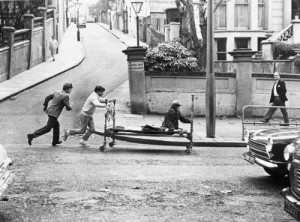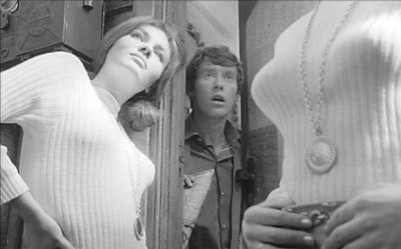
Richard Lester’s The Knack…And How to Get It is an often overlooked gem from the ‘60s. A lot of this surely has to do with it being made between Lester’s two Beatles films, and the bizarre, unfortunate fact that Lester’s work and influence have been forgotten or trivialized. You rarely hear Lester’s name mentioned (except by Martin Scorsese) as one of the great directors of the ‘60s (nor do you hear about his peers that came out of the French New Wave scene). This most likely has to do with his cinematic playfulness. Nevertheless, the kind of fervor Lester brought to the big screen still echoes today in the works of filmmakers as thematically disparate as Wes Anderson and Edgar Wright, and The Knack is a brilliant encapsulation of this signature style. Like so many of Lester’s films, it’s just fun.

Set in ‘60s London, the film is a both a romantic comedy that beautifully captures the time period, and a surprisingly (and occasionally sneaky) look at not just sexuality, but also sexual dynamics and youth culture. But again, Lester isn’t concerned with delving too heavily into any one subject — he’s here to entertain. The film is cut at an often frantic pace, and the dialogue has no problem keeping up (in a lot of ways, you could call The Knack Woody Allen on amphetamines). There’s a freedom in the way Lester has constructed this film, with its fits of absurdity and silliness, and energy few have matched.

The film follows a sexually frustrated, constantly fretful school teacher (Michael Crawford), who yearns to learn the secrets to wooing women (his only idea is to buy a bigger bed). So he turns to his sexually astute roommate (Ray Brooks) for help. Once he meets his new roommate (Donal Donnelly) — who insists on painting everything white — and a young woman who’s just arrived in London (Rita Tushingham), the film turns into an agreeably loopy sexual farce that’s kind-hearted instead of raunchy. The Knack walks a precarious line, often feeling like it might just fall to pieces in a garbled mess. This is the risk Lester runs for such a frenetically quick-witted film that’s filled with odd jokes and sight gags that disappear often before you have time to process them. But what’s most astonishing is how he never loses control of his film. That might be his most impressive feat.




This was also the start of a productive partnership between Lester and screenwriter Charles Wood, which would subsequently produce HELP! and HOW I WON THE WAR.
You left out The Bed-Sitting Room and (wisely, perhaps) Cuba. Funny thing about Lester’s films — at least through The Three and Four Musketeers — is they’re among the most distinctive of any director who never took a writing credit. And almost nothing else in Wood’s career suggests this kind of a sense of humor.
I’d quite forgotten how much I love this film till I looked at the trailer again. It’s really just phenomenally good — possibly (dare I say it?) better than the Beatle films.